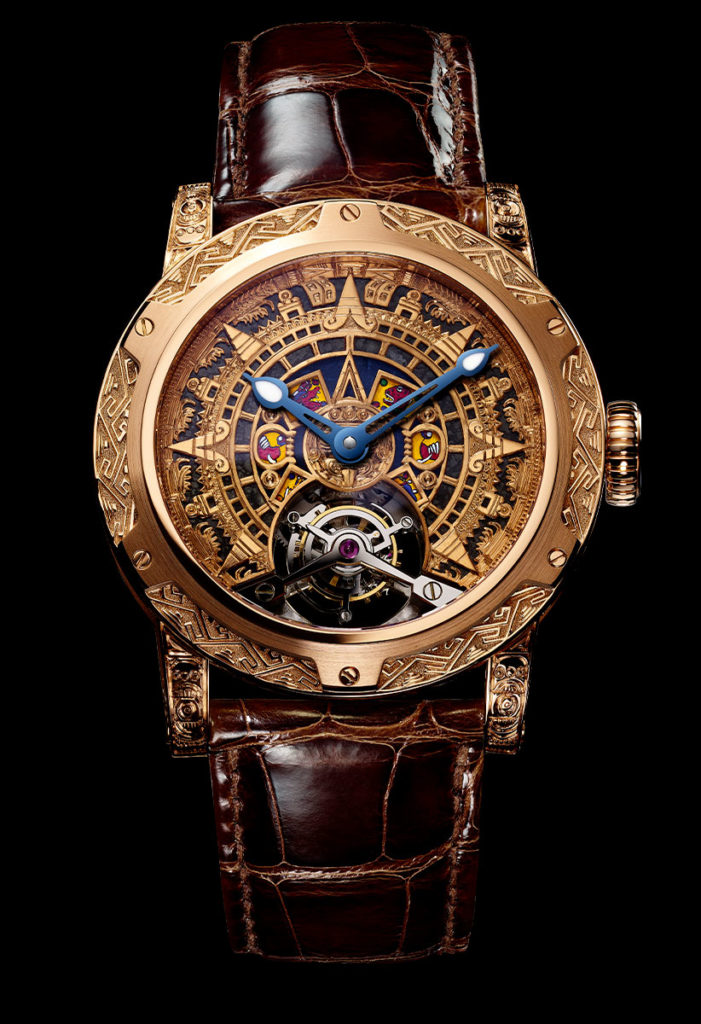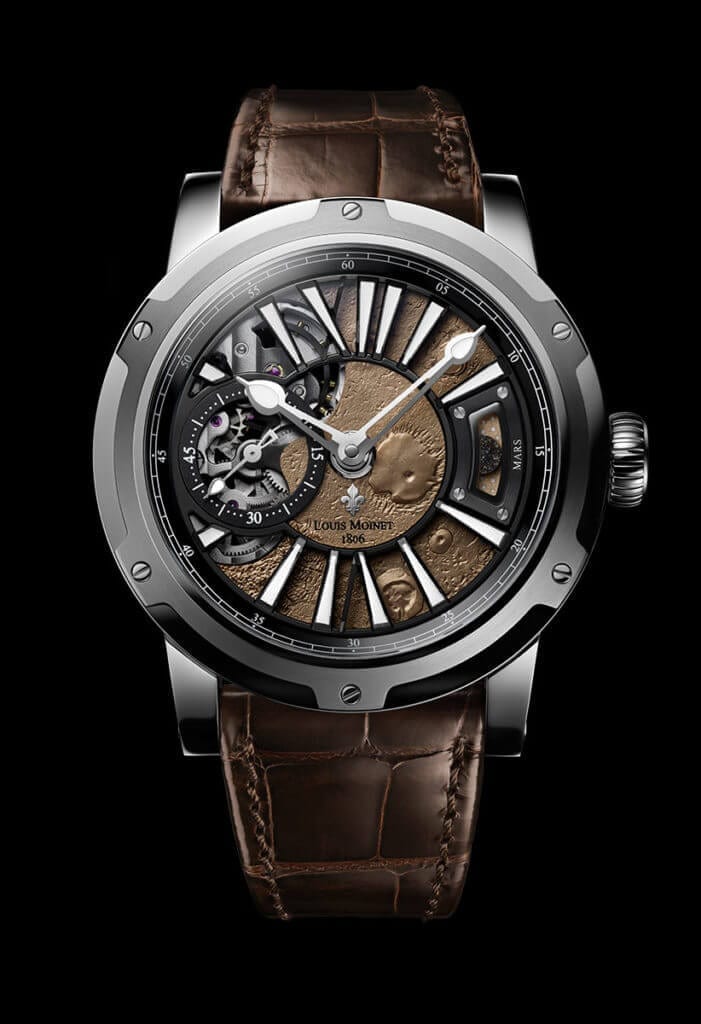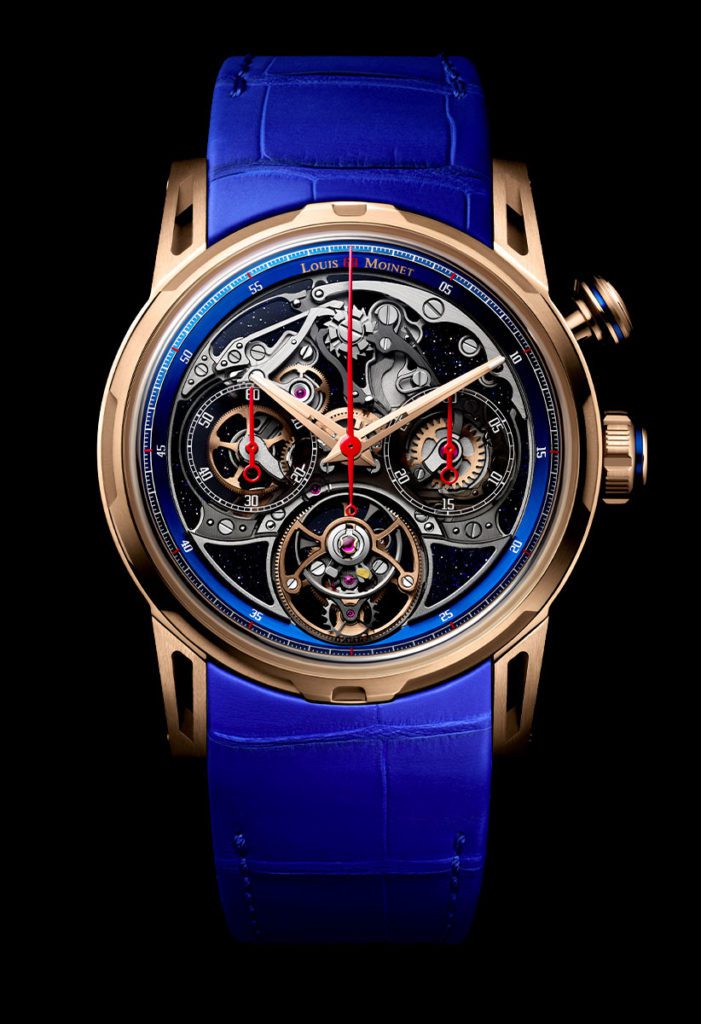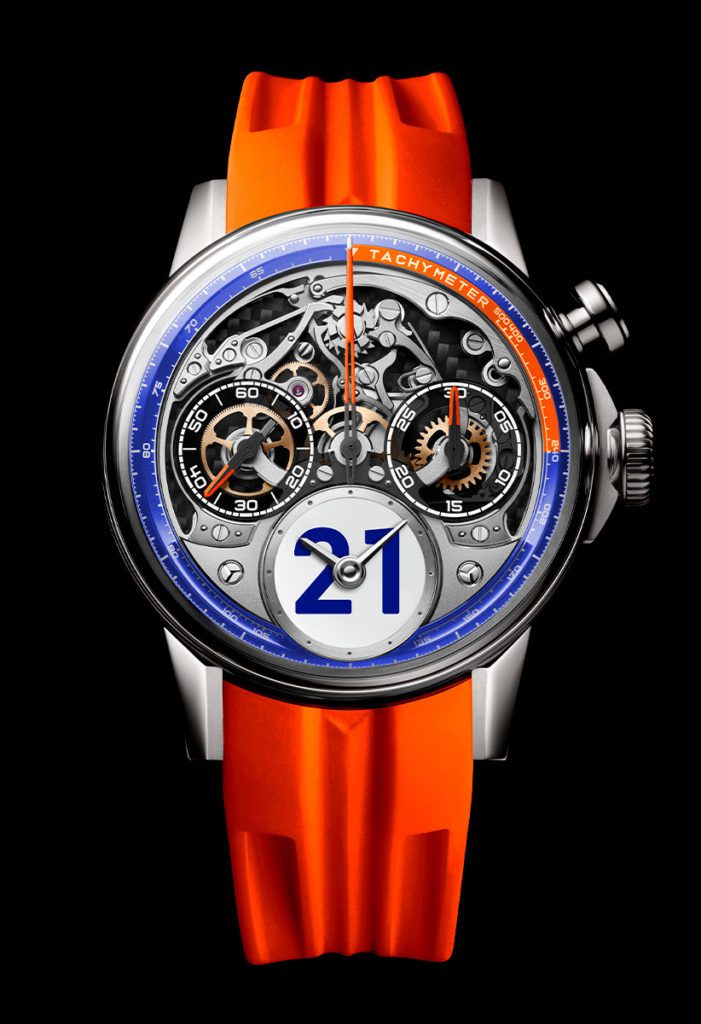Louis Moinet
The pursuit of rare timepieces
Story
When Jean-Marie Schaller launched Louis Moinet in the year 2000, he had the distinct feeling that some fate had, almost mysteriously, placed that name in his path.
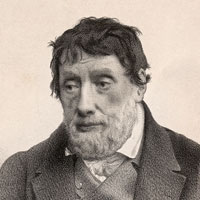
Louis Moinet (1768-1853) had played a key role in watchmaking in the early nineteenth century, but history had swallowed him whole.
Schaller searched far and wide, and gradually discovered that Moinet had been a highly respected watchmaker by his peers, which included the likes of Louis Berthoud, Antide Janvier and even Louis-Abraham Breguet, who considered Moinet the world’s second-best watchmaker, after himself, of course.
Among Moinet’s many creations were clocks for many famous dignitaries, including Napoleon, Thomas Jefferson, and James Monroe.
But there was more. Working his way through Moinet’s Traité d’Horlogerie, he came across the description of a mysterious machine Moinet had invented.
Schaller set out on a veritable quest lasting ten years to find this legendary device. He consulted with experts, but some even doubted the existence of such a wondrous timepiece. And then, the Fates delivered their gift. At a Christies’ auction in Geneva in 2012, Schaller finally found and acquired Moinet’s now famous compteur de tierces, which turned out to be the first stop watch ever made. It was revealed to the public on March 21, 2013, a date that rewrote watchmaking history.
Until then, Schaller, with the creative reins of his enterprise firmly in hand, had been making a name for his small but bold brand with collections running on exceptional vintage movements, such as the Lemania 1873.
However, the acquisition of the compteur de tierces catapulted the name Louis Moinet into the public eye and spurred his decision to resolutely explore wider technical and aesthetic horizons.
Louis Moinet’s portfolio of rare watches grew rapidly with complex timepieces made using rare materials that focused on special themes. Each unique piece acts as a touchstone for the owner, one that might connect with an important event, a life philosophy, or an aesthetic ideal.
Messengers from outer space, has become a recurring and fascinating element.
Only Mexico
The Only Mexico tapped into the spirituality of Aztec culture and came with a fragment of the Allende meteorite, the oldest meteorite known to man.
Mars
The Mars model went even further, with a fragment of a very rare Martian meteorite enclosed in a capsule at 3 o’clock.
Epitome of contemporary mechanical art!
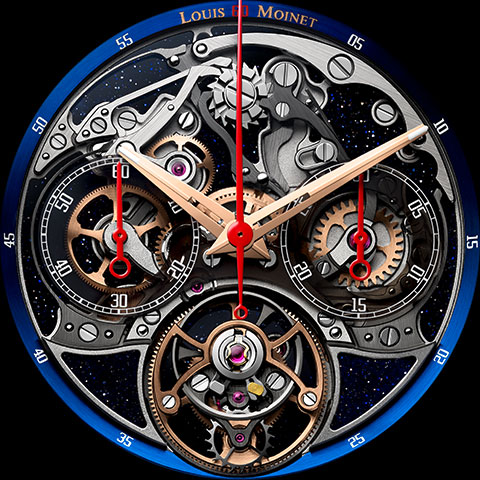
There is beauty in pure mechanics, of course, and like the company’s spiritus rector, Schaller is also willing to take on some daring technical challenges.
Over two decades after reviving and rehabilitating Louis Moinet, Jean-Marie Schaller has managed to not only return Louis Moinet to his rightful place in the pantheon of great watchmakers, but has also created a brand with a strong an lasting identity.
Recognition has come from a growing fan base in the form of many awards for design and technical wizardry, not to speak of two world records in the Guinness Book of Records for the compteur de tierce as the world’s first chronograph and first high-frequency watch.
The secret to this success lies in Schaller’s persistence, creativity, boldness, and dedication. He has been willing to take chances, follow his instincts, and especially surprise and enthuse those who are prepared to explore new horizons in watchmaking.
Impulsion
The Impulsion watch combines the legacies of Abraham-Louis Breguet and Louis Moinet, two key figures in watchmaking and close friends. Breguet invented the tourbillon while Moinet created the chronograph. Today, Les Ateliers Louis Moinet draws on a veritable wellspring of modern creativity that has succeeded in integrating these two high complications in a new mantel, one that generates strong emotions. This limited edition of 28 pieces features a column-wheel chronograph mechanism on the dial at 12 o’clock and a flying tourbillon at 6 o’clock.
Jules Verne
The Jules Verne “To the Moon” dial features a disk of ultra-rare moon meteorite harvested where Apollo 16 had landed. Most moon rocks are brownish grey, but this one artistically marbled by nature itself. Eight separate slices have been made for eight unique timepieces the future owner can choose from. The rest of the dial is an invitation to gaze and dream. The center is surrounded by an elegant green lacquered guilloche pattern that appears to move hypnotically as it catches the light. Between 5 and 6 o’clock, a flying tourbillon animates the dial and marks the seconds. The indices recall a wind rose, an invitation to exploring distant lands.
Time to Race
Time to Race offers another kind of personal connection to the owner. Each chronograph comes in six color schemes, four of which are from national car racing teams: green for England, red for Italy, blue for France, and silver for Germany (with a black strap). Hypercars are also celebrated with orange and lime-green schemes. The color is used for the preformed rubber strap, for all the hands, and to mark the first quarter of the tachymeter scale. The future buyer can also choose a specific – perhaps lucky – number that will appear on the opalescent hour and minute dial at 6 o’clock. That number is used once per team, as it were, so each watch is unique and personal.


